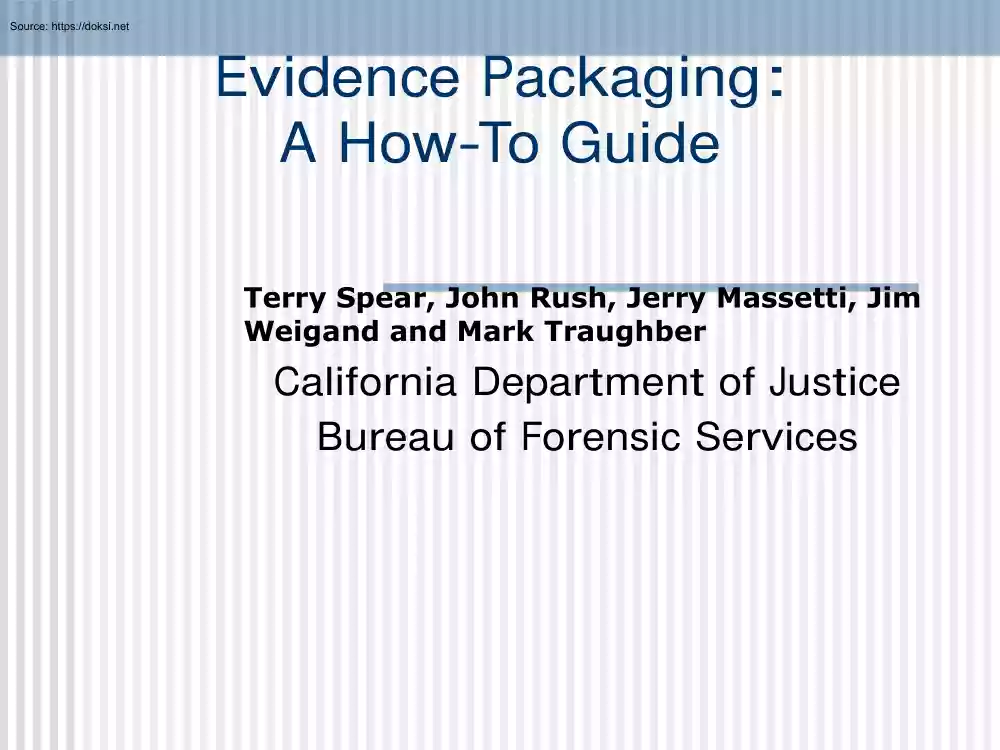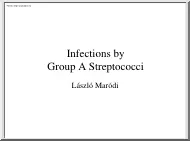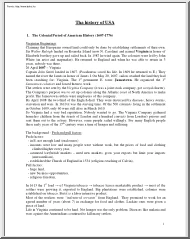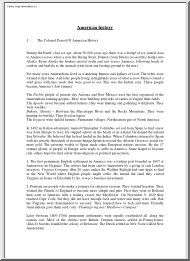Please log in to read this in our online viewer!

Please log in to read this in our online viewer!
No comments yet. You can be the first!
What did others read after this?
Content extract
Evidence Packaging: A How-To Guide Terry Spear, John Rush, Jerry Massetti, Jim Weigand and Mark Traughber California Department of Justice Bureau of Forensic Services Goals of Evidence Packaging Protects personnel from possible hazards associated with evidence: Accidental firearm discharge Biohazards Sharp objects Health hazards associated with exposure to mold • Wet plant material Goals of Evidence Packaging Protects evidence against: Loss Contamination Cross-transfer • Suspect to victim • Victim to suspect • Scene to scene • Item to item Deterioration Goals of Evidence Packaging Correctly identifies evidence with respect to: Evidence description: What is it? Evidence source • Origin – where was evidence when it was collected • Custodial Agency Chain of custody Provides a unique identifier so it cannot be confused with any other evidence item • Laboratory case and item number
Packaging Can indicate What processing is needed • For example: “Fingerprint processing required” Health hazards (e.g sharp knife) Required or preferred storage conditions • “Store at room temperature” • “Store frozen” Elements of packaging evidence Does evidence need to be prepared for packaging? Certain types of evidence may need to be dried before it can be packaged: • Wet biological samples • Fresh plant material What Can Happen When Biological Evidence is Packaged Wet? Evidence “leaks” through to the exterior of the container Elements of packaging evidence What type of packaging is optimal? Plastic: What type of plastic? • Envelope • Bag Paper • Envelopes • Bag • Boxes Sometimes Plastic Containers are Optimal: Controlled Substances LSD on blotter paper Kapak packaging can prevent exposure to potent drugs Sometimes Paper Containers are Optimal: Biological Samples
Allows a sample that is not completely dry to finish drying and May prevent the deterioration of a biological sample if it is not completely dry when packaged What Happens When Biological Evidence is Wet? Evidence “leaks” through to the exterior of the container, resulting in: Sample deterioration Sample loss Contamination issues Elements of Packaging Evidence What type of packaging is optimal? Size of container is important • Too small and the packaging is likely to fail over time • Too big and evidence can be dispersed throughout container and difficult to recover (e.g powder, trace evidence) Elements of Packaging Evidence This envelope is too small for the evidence it is holding Elements of Packaging Evidence Does evidence require internal packaging? Bindle Box Coin envelope Hold down device Syringe tube/”sharps” container Glass Fragments Deposited into Large Envelope Small glass
fragments can be lost from poorly sealed envelopes Ideally, these fragments would be packaged into a bindle first Sealing Evidence Sealing evidence properly is a requirement of most crime labs Issues: • Type of seal • Need for identifying mark • Where seal(s) is to be placed Sealing Evidence Ways evidence can be sealed Heat seal Tape seal Lock seal All seals must be initialed to document the person sealing the evidence and dated to indicate when the evidence was sealed How Not to Seal Evidence Seal should completely seal envelope flap How Not to Seal Evidence Seal should completely seal bag flap How Not to Seal Evidence Staples are not an appropriate evidence “seal” How to Correctly Seal Evidence Tape seal across entire flap of envelope Seal is initialed and dated How to Correctly Seal Evidence Tape seal across entire “flap” of bag Seal is initialed and dated Biological Evidence
Packaging Biological Evidence Insure the sample is dry Do not dry in a heated air stream Use paper containers Immobilize evidence when necessary “sharps”: knifes, broken glass when stain could be dislodged Recommendations for Collection of Biological Evidence Collect and package stains separately--do not allow separate stains to come into contact with one another Sheets of paper can be used to minimize contact of stains on a bloodstained garment Consider packaging all biological samples separately • A bloodstain swab and its control can be separately packed into two coin envelopes and then both envelopes can be placed into the same larger envelope Recommendations for Collection of Biological Evidence No! To minimize the chance of cross transfer of adhering evidence; different clothing items should NOT be packaged in the same container Recommendations for Handling Biological Evidence Attempt to insure that anything
that contacts biological samples during collection is free of anything that might contain human DNA Work on clean surfaces Wear cloves and change when necessary Packaging a Wet Bloodstain on a Swab After samples are dried, package the bloodstain sample and the control into separate coin envelopes How NOT to Package a Wet Bloodstain Do not use any packaging device that limits air exchange Biological samples No! will deteriorate if it takes too long for them to dry Packaging a Dry Bloodstain Once the sample is dried it can be safely placed into a paper envelope and sealed Packaging Bloody Clothing Attempt to allow bloodstains to dry as much as possible Place clothing onto a piece of clean paper Packaging Bloody Clothing Place paper between stained areas so as to prevent stain transfer Packaging Bloody Clothing Place paper between stained areas so as to prevent stain transfer Packaging Bloody Clothing
Seal and date paper package with bloody shirt Insert paper package into larger paper bag This is NOT the proper way to package a bloody knife Although paper is good packaging for bloodstained evidence This knife needs to be immobilized because This is NOT the proper way to package a bloody knife It can easily pierce the paper envelope and endanger anyone who handles this evidence In addition, blood from the blade can be easily lost How to Properly Package a Bloody Knife Use a cardboard box (not airtight) Immobilize knife to protect both personnel & the blood sample on blade Packaging Trace Evidence Trace evidence is small evidence and can be easily lost Examples of trace evidence: Hairs Glass fragments Paint flakes Fibers Packaging Trace Evidence If it is necessary to remove and package trace evidence, its nature and location must be documented before the evidence is altered Packaging
Trace Evidence Items must be visually examined and trace evidence identified Trace evidence can be removed with tweezers and placed into appropriate packaging Trace evidence can also be removed with tape lifts Packaging must be appropriately sized & designed so that this small evidence cannot fall out of the container Glass Fragments Glass fragments are small and can be lost from poorly sealed envelopes Glass Fragments Deposited into Large Envelope Small glass fragments can be lost from poorly sealed envelopes These fragments need to be packaged into a bindle before being placed into envelope First Step: Placing Glass Evidence into a Bindle The glass is collected and placed into a paper bindle The bindle is then sealed before it is inserted into an envelope Packaging Paint Fragments Bindles can also be used to package paint fragments Packaging Paint Fragments Rigid boxes can then be used to hold paper bindle with
fragile paint fragments Box is then placed into paper evidence envelope Firearms Evidence Packaging Firearms Evidence Record all necessary information about condition of firearm: Position of hammer, safety, & other controls Number and location of fired and unfired cartridges Presence of powder residue “halos” on revolver cylinder face Blood or trace evidence visible on gun exterior Handling Firearms Evidence This weapon is loaded and ready to fire NEVER PACKAGE A LOADED WEAPON Remove the magazine & make sure chamber is empty Handling Firearms Evidence Firearms can be handled by any surface which does not take fingerprints Serrations on slide Checkered stocks How NOT to Handle Firearms Evidence Do NOT insert anything into the barrel EXTREMELY UNSAFE! Could alter the firearm Could remove blood or trace evidence Handling Firearms Evidence Once the firearm has been rendered safe, it
can be placed into a cardboard box and Immobilized with a plastic tie Make sure the tie goes BEHIND the trigger Handling Firearms Evidence This packaging will permit fingerprint, blood and trace evidence to be recovered The evidence now needs to be appropriately labeled and sealed Write “Unloaded” notification on outside of container Handling Firearms Evidence Fired bullets need to be carefully handled to protect critical markings on the bullet surface and any adhering trace evidence Do NOT mark bullet Handling Firearms Evidence This type of evidence requires some internal packaging Paper bindles or soft tissue can be used Handling Firearms Evidence The wrapped bullet can now be placed into an appropriate size container This container must be labeled and then • Placed into a large evidence container Handling Firearms Evidence No need to remove cartridges from the magazine at scene The
magazine with cartridges can be placed into an appropriate sized paper envelope Handling Firearms Evidence Package loose cartridges in paper envelopes Drug Evidence Packaging Drug Evidence Drug Evidence Packaging needs to accommodate: Health hazards associated with certain drug items • Syringes • Evidence carried in body cavities Packaging Drug Evidence Drug Evidence Packaging needs to accommodate: Variable characteristics of drug evidence: • Different drugs have different possible health hazards to personnel handling exhibits • Some drugs are very potent in small amounts • Liquid samples • Sharps Multiple forms • Powders, sticky tar, residues, plant material • Appropriate Packaging Materials for Some Drug Evidence Kapak pouches Safely contain most drug evidence & protect personnel against unnecessary exposure Need to be heat sealed Airtight Not good for fresh plant material
Appropriate Packaging Materials for Some Drug Evidence Sealed Kapak pouches can safely contain potent drug evidence & protect personnel against unnecessary exposure Sealing Kapak pouches Heat sealers Obtain one large enough to accommodate opening of Kapak pouches being used Poorly Sealed Drug Evidence Seals placed too close to evidence make it difficult for the analyst to reseal evidence after analysis Properly Sealed Drug Evidence Seals are placed far enough away from evidence to allow re-sealing this item after analysis Appropriate Packaging Materials Suitable plastic bag purchased with label and seal Plastic containers should be impervious to chemical solvents (e.g Kapak pouches) Choose an Appropriate Sized Container Do not place a small amount of powder in container that is too big Powder is difficult to recover because electrostatic charge causes it to disperse and cling to plastic surfaces Inappropriate Packaging
for Drug Evidence A paper envelope & paper bindles are not by themselves sufficient packaging for bindles containing drug evidence Inappropriate Packaging Materials Do not use sealed plastic containers to package fresh or wet plant material Evidence can get moldy Use paper envelopes or bags– They allow fresh plant material to dry Appropriate Packaging Materials Plastic containers can be used if plant material is completely dry Minimize Items Submitted Package the pink bindle and wooden box separately Submit only the bindle to the laboratory for drug analysis Avoid submitting paraphernalia Packaging Drug Evidence The bindle can be sealed in a Kapak pouch and then placed into large paper envelope Syringes May Not Always be Accepted into Crime Labs Consult your laboratory as to their acceptance criteria and specific packaging requirements Syringes Syringes can be a significant biohazard and need to be handled and packaged
very carefully Use a “one handed” technique when handling syringes Instead of Submitting Syringe: When possible, transfer liquid contents of syringe to a suitable container and submit this container only Packaging Syringes If it is necessary to submit a syringe, package it in a puncture-proof container designed for packing syringes
Packaging Can indicate What processing is needed • For example: “Fingerprint processing required” Health hazards (e.g sharp knife) Required or preferred storage conditions • “Store at room temperature” • “Store frozen” Elements of packaging evidence Does evidence need to be prepared for packaging? Certain types of evidence may need to be dried before it can be packaged: • Wet biological samples • Fresh plant material What Can Happen When Biological Evidence is Packaged Wet? Evidence “leaks” through to the exterior of the container Elements of packaging evidence What type of packaging is optimal? Plastic: What type of plastic? • Envelope • Bag Paper • Envelopes • Bag • Boxes Sometimes Plastic Containers are Optimal: Controlled Substances LSD on blotter paper Kapak packaging can prevent exposure to potent drugs Sometimes Paper Containers are Optimal: Biological Samples
Allows a sample that is not completely dry to finish drying and May prevent the deterioration of a biological sample if it is not completely dry when packaged What Happens When Biological Evidence is Wet? Evidence “leaks” through to the exterior of the container, resulting in: Sample deterioration Sample loss Contamination issues Elements of Packaging Evidence What type of packaging is optimal? Size of container is important • Too small and the packaging is likely to fail over time • Too big and evidence can be dispersed throughout container and difficult to recover (e.g powder, trace evidence) Elements of Packaging Evidence This envelope is too small for the evidence it is holding Elements of Packaging Evidence Does evidence require internal packaging? Bindle Box Coin envelope Hold down device Syringe tube/”sharps” container Glass Fragments Deposited into Large Envelope Small glass
fragments can be lost from poorly sealed envelopes Ideally, these fragments would be packaged into a bindle first Sealing Evidence Sealing evidence properly is a requirement of most crime labs Issues: • Type of seal • Need for identifying mark • Where seal(s) is to be placed Sealing Evidence Ways evidence can be sealed Heat seal Tape seal Lock seal All seals must be initialed to document the person sealing the evidence and dated to indicate when the evidence was sealed How Not to Seal Evidence Seal should completely seal envelope flap How Not to Seal Evidence Seal should completely seal bag flap How Not to Seal Evidence Staples are not an appropriate evidence “seal” How to Correctly Seal Evidence Tape seal across entire flap of envelope Seal is initialed and dated How to Correctly Seal Evidence Tape seal across entire “flap” of bag Seal is initialed and dated Biological Evidence
Packaging Biological Evidence Insure the sample is dry Do not dry in a heated air stream Use paper containers Immobilize evidence when necessary “sharps”: knifes, broken glass when stain could be dislodged Recommendations for Collection of Biological Evidence Collect and package stains separately--do not allow separate stains to come into contact with one another Sheets of paper can be used to minimize contact of stains on a bloodstained garment Consider packaging all biological samples separately • A bloodstain swab and its control can be separately packed into two coin envelopes and then both envelopes can be placed into the same larger envelope Recommendations for Collection of Biological Evidence No! To minimize the chance of cross transfer of adhering evidence; different clothing items should NOT be packaged in the same container Recommendations for Handling Biological Evidence Attempt to insure that anything
that contacts biological samples during collection is free of anything that might contain human DNA Work on clean surfaces Wear cloves and change when necessary Packaging a Wet Bloodstain on a Swab After samples are dried, package the bloodstain sample and the control into separate coin envelopes How NOT to Package a Wet Bloodstain Do not use any packaging device that limits air exchange Biological samples No! will deteriorate if it takes too long for them to dry Packaging a Dry Bloodstain Once the sample is dried it can be safely placed into a paper envelope and sealed Packaging Bloody Clothing Attempt to allow bloodstains to dry as much as possible Place clothing onto a piece of clean paper Packaging Bloody Clothing Place paper between stained areas so as to prevent stain transfer Packaging Bloody Clothing Place paper between stained areas so as to prevent stain transfer Packaging Bloody Clothing
Seal and date paper package with bloody shirt Insert paper package into larger paper bag This is NOT the proper way to package a bloody knife Although paper is good packaging for bloodstained evidence This knife needs to be immobilized because This is NOT the proper way to package a bloody knife It can easily pierce the paper envelope and endanger anyone who handles this evidence In addition, blood from the blade can be easily lost How to Properly Package a Bloody Knife Use a cardboard box (not airtight) Immobilize knife to protect both personnel & the blood sample on blade Packaging Trace Evidence Trace evidence is small evidence and can be easily lost Examples of trace evidence: Hairs Glass fragments Paint flakes Fibers Packaging Trace Evidence If it is necessary to remove and package trace evidence, its nature and location must be documented before the evidence is altered Packaging
Trace Evidence Items must be visually examined and trace evidence identified Trace evidence can be removed with tweezers and placed into appropriate packaging Trace evidence can also be removed with tape lifts Packaging must be appropriately sized & designed so that this small evidence cannot fall out of the container Glass Fragments Glass fragments are small and can be lost from poorly sealed envelopes Glass Fragments Deposited into Large Envelope Small glass fragments can be lost from poorly sealed envelopes These fragments need to be packaged into a bindle before being placed into envelope First Step: Placing Glass Evidence into a Bindle The glass is collected and placed into a paper bindle The bindle is then sealed before it is inserted into an envelope Packaging Paint Fragments Bindles can also be used to package paint fragments Packaging Paint Fragments Rigid boxes can then be used to hold paper bindle with
fragile paint fragments Box is then placed into paper evidence envelope Firearms Evidence Packaging Firearms Evidence Record all necessary information about condition of firearm: Position of hammer, safety, & other controls Number and location of fired and unfired cartridges Presence of powder residue “halos” on revolver cylinder face Blood or trace evidence visible on gun exterior Handling Firearms Evidence This weapon is loaded and ready to fire NEVER PACKAGE A LOADED WEAPON Remove the magazine & make sure chamber is empty Handling Firearms Evidence Firearms can be handled by any surface which does not take fingerprints Serrations on slide Checkered stocks How NOT to Handle Firearms Evidence Do NOT insert anything into the barrel EXTREMELY UNSAFE! Could alter the firearm Could remove blood or trace evidence Handling Firearms Evidence Once the firearm has been rendered safe, it
can be placed into a cardboard box and Immobilized with a plastic tie Make sure the tie goes BEHIND the trigger Handling Firearms Evidence This packaging will permit fingerprint, blood and trace evidence to be recovered The evidence now needs to be appropriately labeled and sealed Write “Unloaded” notification on outside of container Handling Firearms Evidence Fired bullets need to be carefully handled to protect critical markings on the bullet surface and any adhering trace evidence Do NOT mark bullet Handling Firearms Evidence This type of evidence requires some internal packaging Paper bindles or soft tissue can be used Handling Firearms Evidence The wrapped bullet can now be placed into an appropriate size container This container must be labeled and then • Placed into a large evidence container Handling Firearms Evidence No need to remove cartridges from the magazine at scene The
magazine with cartridges can be placed into an appropriate sized paper envelope Handling Firearms Evidence Package loose cartridges in paper envelopes Drug Evidence Packaging Drug Evidence Drug Evidence Packaging needs to accommodate: Health hazards associated with certain drug items • Syringes • Evidence carried in body cavities Packaging Drug Evidence Drug Evidence Packaging needs to accommodate: Variable characteristics of drug evidence: • Different drugs have different possible health hazards to personnel handling exhibits • Some drugs are very potent in small amounts • Liquid samples • Sharps Multiple forms • Powders, sticky tar, residues, plant material • Appropriate Packaging Materials for Some Drug Evidence Kapak pouches Safely contain most drug evidence & protect personnel against unnecessary exposure Need to be heat sealed Airtight Not good for fresh plant material
Appropriate Packaging Materials for Some Drug Evidence Sealed Kapak pouches can safely contain potent drug evidence & protect personnel against unnecessary exposure Sealing Kapak pouches Heat sealers Obtain one large enough to accommodate opening of Kapak pouches being used Poorly Sealed Drug Evidence Seals placed too close to evidence make it difficult for the analyst to reseal evidence after analysis Properly Sealed Drug Evidence Seals are placed far enough away from evidence to allow re-sealing this item after analysis Appropriate Packaging Materials Suitable plastic bag purchased with label and seal Plastic containers should be impervious to chemical solvents (e.g Kapak pouches) Choose an Appropriate Sized Container Do not place a small amount of powder in container that is too big Powder is difficult to recover because electrostatic charge causes it to disperse and cling to plastic surfaces Inappropriate Packaging
for Drug Evidence A paper envelope & paper bindles are not by themselves sufficient packaging for bindles containing drug evidence Inappropriate Packaging Materials Do not use sealed plastic containers to package fresh or wet plant material Evidence can get moldy Use paper envelopes or bags– They allow fresh plant material to dry Appropriate Packaging Materials Plastic containers can be used if plant material is completely dry Minimize Items Submitted Package the pink bindle and wooden box separately Submit only the bindle to the laboratory for drug analysis Avoid submitting paraphernalia Packaging Drug Evidence The bindle can be sealed in a Kapak pouch and then placed into large paper envelope Syringes May Not Always be Accepted into Crime Labs Consult your laboratory as to their acceptance criteria and specific packaging requirements Syringes Syringes can be a significant biohazard and need to be handled and packaged
very carefully Use a “one handed” technique when handling syringes Instead of Submitting Syringe: When possible, transfer liquid contents of syringe to a suitable container and submit this container only Packaging Syringes If it is necessary to submit a syringe, package it in a puncture-proof container designed for packing syringes




